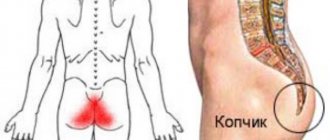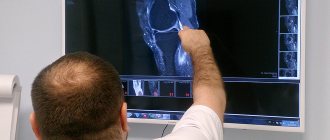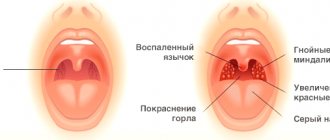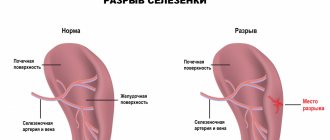Checklist against illness
The first thing that will help determine the disease is the symptoms. Clarification is needed for pain in the back of the thigh: it is pulling in nature, shooting, is constant, occurs in some poses, increases/decreases with movement, and so on. In this case, it is important to understand whether the buttock or the back of the thigh underneath it hurts. This may be accompanied by:
- pain in the buttock when sitting;
- burning sensation in the thigh and buttock;
- painful sensations on the outer or inner side of the lower leg;
- pain and/or partial loss of sensation in the foot.
All these sensations can be observed only on one leg or on both legs at once. In the second case, it is important to note whether the intensity of the pain is the same.
When recording symptoms, it is necessary to note whether they are somehow related to postures during work and rest. For example, if you slept on your right side and you feel tolerable, but if you slept on your left, it’s difficult to even get up.
You should also note any unusual sensations. A feeling of heat in the feet and even sudden sweating of the feet will definitely interest a good neurologist or vertebrologist.
Physical overexertion
In this case, pain at the back of the knee begins to bother you, for example, after a long run or walk, or after an improperly planned workout. The cause of the discomfort is lactic acid, which, accumulating in muscle tissue during excessive exercise, does not have time to be washed out by the bloodstream, or microtrauma of muscle fibers that occur when performing exercises with high loads.
In these cases, a light massage and mild physical activity (for example, mild stretching) will help. Anti-inflammatory ointments are sometimes used.
For reference! Hot baths and warming ointments help speed up blood flow, which also helps reduce pain.
The investigation is being conducted by a vertebrologist
The first and most important part of the diagnosis is interviewing the patient. For example, if a patient told the doctor: “My buttock hurts when I sit,” then the sciatic nerve is probably to blame. If the patient has not had injuries to the hip, pelvis, coccyx area, or unsuccessful intramuscular injections, the doctor will suggest sciatica - pinching of the sciatic nerve somewhere between the 4th lumbar vertebra and the sore spot. The most common culprit is a spasm of the piriformis muscle, through which this nerve passes. But it happens that problems are associated with the 5th lumbar or the first three sacral vertebrae, the hip joint, tumors, or even changes in the pelvic area during pregnancy (including early stages). The same diagnostic algorithms are available for pinched other nerves.
The doctor then examines the patient. He determines which muscles are tight, how the patient reacts when certain points are pressed, and conducts standard neurological tests. Next, an examination is scheduled. Depending on the results of the survey and examination, the following may be prescribed:
- x-ray in two projections;
- computed tomography (CT);
- magnetic resonance imaging (MRI).
Usually they start with an x-ray. A CT scan will be needed if there is a suspicion of a fracture, and an MRI will be needed if it is necessary to exclude herniated discs or changes in soft tissues. Additional studies - blood tests, electrocardiogram, ultrasound and others - are prescribed if the doctor suspects non-neurological causes of pain or wants to make sure there are no contraindications to certain prescriptions.
Diagnostics
The examination is usually carried out by orthopedic traumatologists. In case of purulent processes, patients are examined by a surgeon, in case of neurological pathology - by a neurologist. At the initial stage, the doctor finds out the history of life and illness, and conducts an external examination. The following additional studies are prescribed:
- X-ray of the hip.
A basic diagnostic method that allows you to identify all major bone pathologies: fractures, cancer, osteomyelitis, periostitis. In case of lesions of soft tissue structures, it is performed to exclude bone lesions and conduct differential diagnosis. - CT scan of bone.
It is used at the final stage of the examination to clarify the results of radiography, planning conservative therapy or surgical intervention. Makes it possible to accurately determine the size, configuration and structural features of the pathological focus in bone tissue. - Ultrasound.
Sonography of soft tissues in myositis and tendonitis reveals areas of inflammation or degeneration. Ultrasound scanning of the veins of the lower extremities is effective in assessing the condition of the veins and lymphatic vessels in patients with phlebitis and lymphangitis, and in identifying blood clots in thrombophlebitis. - MRI of soft tissues.
Recommended for ambiguous results of other diagnostic procedures. It is carried out to determine the localization of deep hematomas, confirm degenerative or inflammatory changes in tendinitis and myositis. - Electrophysiological studies.
For patients with pain of neurological origin, ENMG, ENG or EMG are indicated to clarify the level of nerve damage and study the condition of nerve and muscle tissue. - Lab tests
. They are performed to determine the severity of the inflammatory process in purulent diseases, assess the condition of organs and systems in malignant neoplasms.
Four ways to help
Let's figure out how to treat pain in the buttock that radiates to the leg if it is determined that the disease is associated with the spine or muscles. There are several ways to help such patients.
- Drug therapy is usually used in the early stages and includes the prescription of vitamins, microelements, medications that relieve muscle spasms, and anti-inflammatory and painkillers. Unfortunately, ointments, tablets and injections most often cannot cure a patient, but in the first stages they help relieve an acute condition.
- Physiotherapy - the use of electromagnetic fields (magnetotherapy) and weak currents (electrophoresis) are considered the main methods, although other procedures are also possible. Their goal is to relax muscles and relieve inflammation.
- Massage, manual therapy and osteopathy are the three main methods of treatment. This is not only about relaxing muscles and restoring blood flow. With the help of these methods, it is possible to correct your posture, and this reduces the likelihood of relapse of the disease.
- Movement treatment: physical therapy, special rehabilitation complexes on suspension systems help consolidate the result and give the back and abdominal muscles the strength necessary to keep the spine in the correct position.
There is no universal treatment for pain in the buttock that radiates to the leg. The doctor prescribes treatment individually. Good news for pregnant women who often suffer from back pain: there are effective ways to treat their spine and joints for them too.
The main causes of nagging pain in the thigh, buttock or groin
Finding the starting point of such a complaint often causes difficulties in differential diagnosis, since the causes of discomfort in these areas can be a consequence of a number of pathological conditions of the human musculoskeletal system. There are everyday reasons (lifestyle, work postures), acute diseases (injuries, exacerbations of chronic conditions), functional deviations in the functioning of the muscular corset.
Among the provocateurs of this pain syndrome are:
- excessive physical activity associated with work
- "sedentary work;
- problems with excess weight;
- the period of bearing a child.
Osteoarthritis
This is a disease that affects the articular cartilage: it becomes brittle, dries out, and even under low load its fibers are destroyed. Following the cartilage, the bone tissue around it undergoes changes. The joints become deformed and bone growths appear on them.
With osteoarthritis of the knee joint, pain spreads from the knee up the front of the thigh.
For reference! Osteoarthritis is a fairly common joint disease. Approximately 80% of our country's population aged 50-60 years faces it, but sometimes younger people, at 20-30 years of age, also suffer from osteoarthritis.
In addition to pain, osteoarthritis is most often characterized by the following symptoms:
- loss of joint mobility;
- crunching in joints;
- edema, swelling in the joint area.
Preventive measures
In order to reduce the risk of recurrence of aching or acute pain in the legs and prevent their development, you can take the following preventive measures:
- Regularly undergo examination of the whole body.
- Adhere to healthy eating rules.
- Drink more water (fluid helps increase lubrication on bones).
- Lead an active lifestyle, performing moderate physical activity.
- Do not start the development of diseases.
- Avoid gaining excess weight.
- Wear comfortable clothes and shoes.
- Allocate enough time for sleep.
- Stop smoking and drinking alcoholic beverages.
Paying attention to your health will help you avoid many problems, including leg pain.
Consultation with a neurologist / Oksana 4809 June 2020
The Ask a Doctor service offers an online consultation with a neurologist on any problem that concerns you. Expert doctors provide consultations around the clock and free of charge. Ask your question and get an answer immediately!
Answers from doctors ComplainKristina Panteleeva, June 15, 2020 Neurologist Hello! Do you have diabetes? ComplainOksana, June 15, 2020Client Christina, good afternoon! No diabetes mellitus + 1ComplainMarina Zelenkova, June 15, 2020 NeurologistComplainOksana, June 15, 2020Client Marina, there are none of the reasons you indicated to ComplainOksana, June 15, 2020Client Marina, thyroid checked in order, I don’t drink, I don’t smoke, weight 47 kg. no diabetes + 1ComplainMarina Zelenkova, June 15, 2020 NeurologistComplainOksana, June 15, 2020Client Marina, I eat everything, including meat. ComplainOksana, June 15, 2020Client Marina, can I then drink vitamin B12 separately? + 1ComplainMarina Zelenkova, June 15, 2021 NeurologistComplainOksana, June 15, 2020Client Marina, thank you) + 1ComplainElena Basil, June 15, 2021 Neurologist You have polyneuropathic pain in your legs. The most common cause is diabetes mellitus. But it is possible for such pain to appear for no reason. Of course, further examination is necessary (general blood count, blood biochemistry, electroneuromyography of the lower extremities, ultrasound of the arteries of the lower extremities). But even without further examination, it is possible to prescribe a drug such as Convalis 0.3 at night (the drug relieves polyneuropathic pain of any cause) . ComplainOksana, June 15, 2020Client Elena, thank you very much. The biochemistry is good, I read the causes of polyneuropathy, the symptoms are only what I described, there are no others, the gastrointestinal tract and urination are in order, there is no sweating or shortness of breath, and there is no much else described. Thank you for the medicine)) + 1Complain Elena Basil, June 15, 2020 Neurologist There are a variety of polyneuropathies. Do not refuse further examination - this will clarify the reason. Convalis treats pain syndrome, but you can also add pentoxifylline (trental) 400 mg in the morning (vascular drug, improves blood rheology (viscosity), also B vitamins, metabolic drugs (cytoflavin 2x2 - 1 month) Complain Oksana, June 15, 2020 Client Elena, Good, thank you! + 1Complain Elena Basil, June 15, 2021 Neurologist Be healthy! + 1Complain Irina Kudasova, June 15, 2020 Gastroenterologist, Therapist Hello! For further examination, I recommend performing an MRI of the cervical spine, because It’s not just the arms that bother me, but also the legs. Later on polyneuropathy. In treatment: berlition 300 mg once a day for 1 month, neurobion 1-3 times a day for 1 month, vigantol 5,000 units per day (the latter is a vitamin D drug, you need to check its level in the blood, if it is below 30 ng/ml, then take vigantol for 2 months). At night, apply ortofen MAZ to your feet. Perform ENMG of the extremities as planned (this study determines changes in peripheral nerves). And a consultant neurologist.Health. ComplainOksana, June 15, 2020Client Irina, thank you very much)) + 1ComplainYulia Shpadyreva, June 15, 2020 Children's neurologist, NeurologistComplainOksana, June 15, 2020Client Yulia, thank you, the blood test is definitely good, I'll do the rest)) + 1ComplainEkaterina Kisel, June 15, 2021 Neurologist, Therapist+ 1 ComplainOksana , June 15, 2020Client Ekaterina, thank you! + 1ComplainYana Potekhina, June 15, 2020 NeurologistComplainOksana, June 15, 2020Client Yana, yes, it all just started after nervous experiences. Thank you for your recommendations)) ComplainOksana, June 15, 2020Client Yana, no weakness in the legs, only tingling and burning ComplainOksana, June 15, 2020Client Yana, just finished a course of Vitrum + 1 vitaminsComplainYana Potekhina, June 15, 2021 NeurologistComplainOksana, June 15, 2020Client Yana, good, thank you very much!)) + 1ComplainYana Potekhina, June 15, 2021 Neurologist Then Berocca is not needed. But it will be good if you take Benfogamma 150 mg, 1 tablet, 1 time a day - 3 months. This is vitamin B1, specifically aimed at restoring nerve fibers. ComplainOksana, June 15, 2020Client Yana, thank you)) + 1ComplainYana Potekhina, June 15, 2020 Neurologist You're welcome! get better! ComplainOksana, June 15, 2020Client Yana, sorry for bothering you, but I read that Gabapentin has very terrible side effects, but are there, by any chance, other effective analogues? + 1Complain Yana Potekhina, June 15, 2020 Neurologist No, from this group they mainly use Gabapentin, Pregabalin, Carbamazepine, precisely for this type of neuropathic pain. And Gabapentin is more or less tolerated. But you know they write a lot of side effects, but overall the drug is well tolerated. You can receive sedative therapy, if against its background the condition improves significantly, then the need for gabapentin will disappear) Complain Oksana, June 15, 2020Client Yana, okay, thank you)) Do you need a prescription for it? Complain Yana Potekhina, June 15, 2021 Neurologist Yes, a prescription is needed for Gabapentin ( Complain Oksana, June 15, 2020 Client Yana, please tell me, is there a remedy that can reduce such pain without a prescription? Complain Yana Potekhina, June 15, 2021 Neurologist No, Oksana, the pain is exactly like neuropathic. Conventional analgesics are powerless. Although I would probably recommend that you try the same Meloxicam injection for 3 days and see if there is an effect. ComplainOksana, June 15, 2020Client Yana, thank you, but everyone writes that I need to treat neuropathic pain. + 1ComplainYana Potekhina, 15 June 2021 Neurologist I also agree with this. But I also do not rule out that sedative therapy will help you. The fact is that gabapentin itself does not cure, it blocks pain, does not act on the cause. The actual cause has not yet been clarified. Psychogenic is in question character. I think it’s worth trying sedative therapy and meloxicam. If there is no effect, then write out a prescription for gabapentin at the clinic. + 1ComplainOksana, June 15, 2020Client Yana, ok, thank you)) ComplainElena Furmanova, June 15, 2021 Pediatrician Hello, did you do an MRI of the lumbosacral spine? ComplainOksana, June 15, 2020Client Elena, hello, no, I haven’t done it yet. Complain Elena Furmanova, June 15, 2021 Pediatrician This must be done Complain Oksana, June 15, 2020 Client Elena, okay, thank you! ComplainMikhail Ivashev, June 16, 2020 Pediatrician, Therapist+ 1ComplainOksana, June 16, 2020Client Mikhail, thank you, but my joints are fine and my lower back doesn’t bother me. My upper legs burn above the knees, closer to the skin. ComplainMikhail Ivashev, June 16, 2021 Pediatrician, Therapist Integumentary tissues - skin, muscles (including above the knee) are innervated by cells of the spinal cord, fibers from these neurons leaving the vertebrae in the lumbar region are pinched and give a burning sensation. The complex remedy that I recommend to you eliminates inflammation and the pinching stops, which means the burning stops. Sincerely. + 1ComplainOksana, June 16, 2020Client Mikhail, thank you)) Similar questions on the topicRash on the legs1 answerJuly 16, 2018Daria, KurshavaQuestion closedShortened right leg1 answerSeptember 14, 2018Al, MinskQuestion closedThe child’s legs hurt16 answersOctober 9, 2018Tatyana, St. PetersburgQuestion closedBroiler pulls his leg1 answerFebruary 21, 2019Viktor, BerdichevQuestion closedAppeared painful bumps at the puncture sites after the threads 1 answer August 7, 2020 Alisa Question closed Hip joint 13 answers October 6, 2021, Moscow Question closed Foot problem 15 answers December 26, 2020 Maria, Saratov Question closed What should I do if I haven’t found the answer to my question?
If you have a similar or similar question, but you have not found the answer, get your medical consultation online.
If you want to get a more detailed consultation with a doctor and solve the problem quickly and individually, ask a paid question in a private personal message. Be healthy!
Content:
Injuries
- Nagging pain in the leg from hip to knee
Damage to the soft tissues of the hip, which includes bruises and sprains (or ruptures) of tendons, is a common occurrence among those who are actively involved in sports. Most likely, in addition to pain, injuries will present symptoms such as:
- edema;
- hematoma;
- painful lumps.
What could be the cause of pain?
The localization of pain in the space between the hip and knee does not always correspond to the same area of pathological changes. This phenomenon is due to the presence of multiple anatomical formations in the femoral and knee areas, as well as above and below lying areas. Pain impulses can come from:
- skin and subcutaneous fat;
- muscle-fascial complexes;
- tendons and ligaments;
- bones and joints (femur, knee and hip joints);
- large arterial vessels;
- superficial and deep veins;
- peripheral nerve trunks on the thigh;
- nerve structures in the lumbosacral spine (nerve roots, spinal cord and its membranes).
Important to remember! Pain in the upper segment of the lower extremity (hip to knee) is a nonspecific symptom. There are so many reasons for its occurrence that only a specialist can correctly determine the most likely one!
The hip consists of many structures and formations. Each of them can become a source of pain impulses
Inflammation
Inflammation in the muscles or myositis is characterized by severe nagging pain below the knee, present even in a state of muscle rest. The following symptoms are also typical:
- compactions in muscle tissue;
- redness;
- pain when touched.
The most common causes of myositis are the following:
- injuries;
- physical stress;
- some infectious diseases.
When myositis occurs as a result of an infectious disease, an increase in temperature may also be observed.
Fact! One of the most common causes of myositis is a viral infection. For example, one of the characteristic symptoms of the flu is muscle pain and body aches.
How to relieve severe pain
If the pain appears as a result of severe physical strain, you can relieve the discomfort at home:
- taking a warm bath (you can add herbal decoctions or essential oils of chamomile, calendula, oak bark, linden blossom or mint to the water);
- having a light relaxing massage using creams or essential oils;
- making a cold compress (pieces of ice wrapped in cloth are applied to the sore spot).
You can also lie on your back with your legs elevated, which will help restore blood circulation in your legs.









